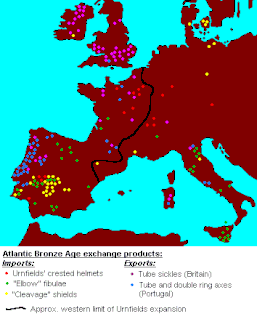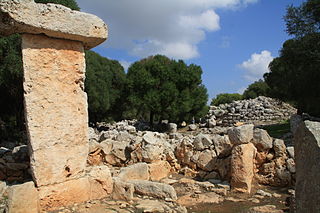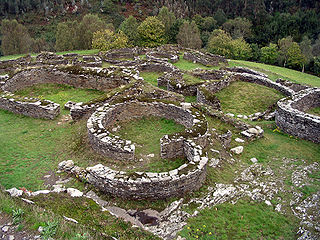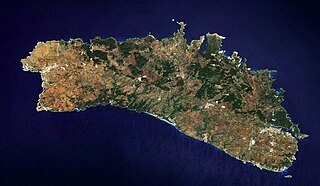 W
WAntigüedades célticas de la isla de Menorca is a book written by Menorcan erudite Juan Ramis y Ramis (1746–1819). It was published in Mahón in 1818 and is the first book/ treatise wholly dedicated to Prehistory in Spain.
 W
WThe Atlantic Bronze Age is a cultural complex of the Bronze Age period of approximately 1300–700 BC that includes different cultures in Portugal, Spain, France, Britain and Ireland.
 W
W W
WBronze of Levante is the name of the proto-Iberian culture extending approximately over the Region of Valencia in the 2nd millennium BC. It is contemporary with the El Argar culture by which it is strongly influenced.
 W
WCapocorb Vell is a talayotic site located about 12 km from Llucmajor on the island of Mallorca. It is one of the most highly excavated talayotic sites in the Balearic islands. Another such site is Ses Païsses.
 W
WA castro is a fortified settlement, usually pre-Roman, some from late Bronze Age and Iron Age, the oldest research associated with the Celtic culture. These are frequently found in the Northern Spain, particularly in Asturias, Galicia, Cantabria, Basque Country and the province of Ávila, with the Castro culture and on the plateau with Las Cogotas culture.
 W
WThe Cueva del Castillo, or Cave of the Castle, is an archaeological site within the complex of the Caves of Monte Castillo, in Puente Viesgo, Cantabria, Spain.
 W
WThe Cerro del Bu is an archaeological site in the Bu hill of the Spanish municipality of Toledo, located on a promontory next to the Tagus river.
 W
WThe hypogeum of Cala Sant Vicenç is a set of caves dating back to the Bronze Age, and perhaps the most spectacular hypogeum on Mallorca. Today, eight caves are visible, though when they were studied by Wilfrid James Hemp, there were 15. Some features of the caves are modern. The taula-like statue at the entrance to the site is also modern.
 W
WThe Lloma de Betxí is a Bronze Age archaeological site in the municipality of Paterna (Valencian Community. It is on the top of a hill at 99m over the sea level and 30m over the surroundings. It is in the county of Paterna, nearby the Turia river, close to Valencia city. The chronology of the site: 1800 – 1300 B.C., part of the Valencian Bronze Age.
 W
WThe motillas were the early settlements of La Mancha (Spain) belonging to the Middle Bronze Age, and connected to the Bronze of Levante culture. These were human-made hills atop of which are placed fortified settlements. Their height is usually between four and five meters and the motillas are separated from each other by a distance of four to five kilometers. Their construction started c. 2200 BCE and they were used for about 1000 years.
 W
WA naveta is a form of megalithic chamber tomb unique to the Balearic island of Menorca. They date to the early Bronze Age. They have two vertical and two corbelled walls giving them the form of an upturned boat, from which the navetas take their name.
 W
WA naviforme was a prehistoric boat-shaped house built on the Balearic Islands of Spain. The hut-like buildings date to the Early Bronze Age or the Pretalayotic Period. The building was generally large and had strong walls. It had dual functions for productive activities and living spaces. Examples of Naviformes are found in various villages but good examples have been excavated at Boquer, Sa Vall, and Son Mercer de Baix.
 W
WSa Cudia Cremada is the name of an archaeological site located in a land property called in the same way, in the outskirts of the city of Mahón, the capital of Menorca.
 W
WSes Païsses is a Bronze Age talayotic settlement on the southeastern outskirts of Artà in northeastern Majorca. It is one of the most important and best-preserved prehistoric sites in the Balearic Islands, although it is largely overgrown with woodland, mainly Quercus ilex, making it impossible to see the site as a whole.
 W
WThe South-Western Iberian Bronze is a loosely defined Bronze Age culture of Southern Portugal and nearby areas of SW Spain. It replaced the earlier urban and Megalithic existing in that same region in the Chalcolithic age.
 W
WA talaiot, or talayot, is a Bronze Age megalith found on the islands of Menorca and Majorca forming part of the Talaiotic Culture or Talaiotic Period. Talaiots date back to the late second millennium and early first millennium BC. There are at least 274 of them, in, near, or related to Talaiotic settlements and the Talaiotic chamber tombs known as navetas. Talaiots pre-date the megalithic structures known as taulas, which are usually found nearby. While some Talaiots are thought to have had a defensive purpose, the use of others is not clearly understood. Some believe them to have served the purpose of lookout or signalling towers, as on Menorca, where they form a network. Talaiots generally take the form of circular or square buildings, and they may have been used as dwellings or meeting places. The talayots on Menorca have been much less prone to weathering than the ones found on Majorca. Despite this, very few grave goods have been found in Menorcan talayots, leading historians to believe that the island had a poorer economy than its larger neighbor.
 W
WTorre d'en Galmés is a Talayotic site on the island of Menorca, between Alaior and Son Bou, Menorca. The town developed from the start of the Talayotic era and expanded until the end of the Roman occupation, after which it was abandoned. Buildings were reoccupied and adapted by Muslim refugees from the Reconquista until the end of the Muslim occupation of the island.